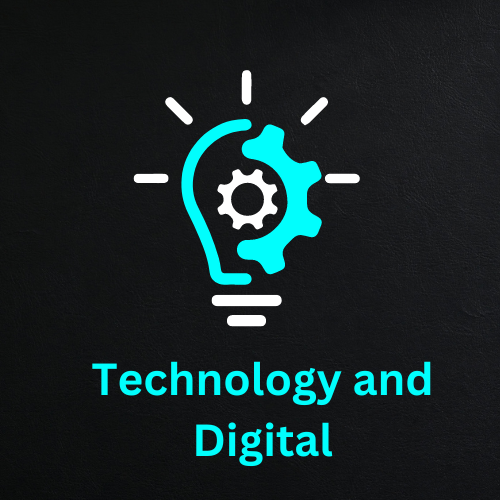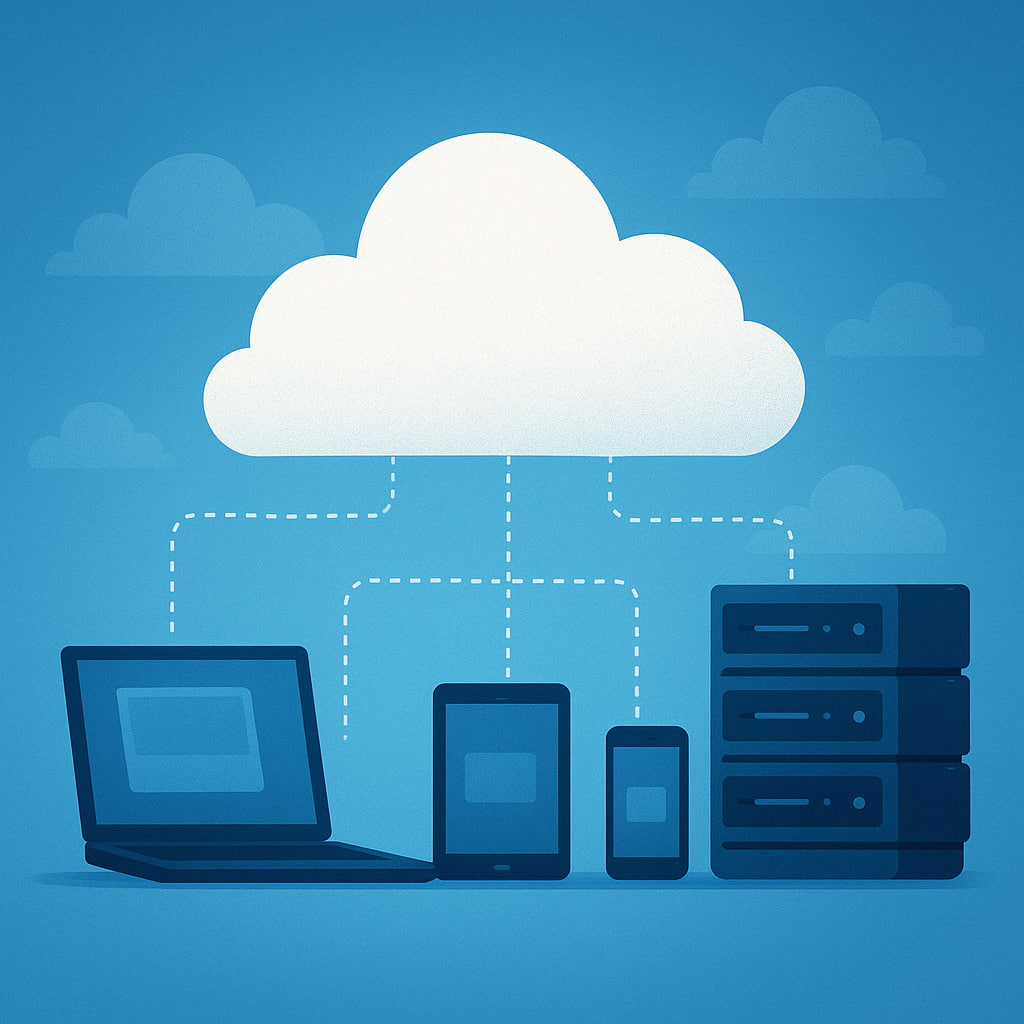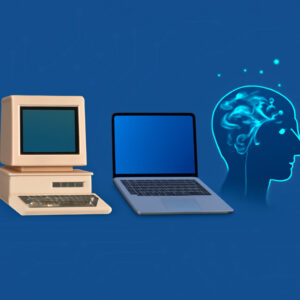How Cloud Computing Is Transforming the IT Landscape

There was a time when the word “cloud” meant nothing more than a shape drifting across the sky. Today, it symbolizes one of the most profound shifts in the history of technology — a transformation that has reshaped how organizations think, build, and grow. Cloud computing has turned the world of IT into a dynamic, flexible, and borderless ecosystem. It is not merely a tool; it is the digital heartbeat that drives the modern enterprise forward.
The Cloud Revolution: A Shift Beyond Infrastructure
At its core, cloud computing represents freedom — the freedom to innovate without the heavy weight of hardware limitations. Once, businesses were defined by the size of their data centers; now, they are defined by the scale of their imagination. Cloud computing has rewritten the rules of scalability, security, and speed, allowing organizations to do in minutes what once took months.
In 2025, global cloud adoption has reached an all-time high. From startups to multinational corporations, nearly every business leverages the cloud in some form. Platforms like Amazon Web Services (AWS), Microsoft Azure, and Google Cloud have become the digital foundations of modern innovation. They provide not just storage, but intelligence — data analytics, AI integration, machine learning models, and real-time collaboration across continents.
Tip for IT Professionals:
Learn one major cloud platform in depth. Certifications in AWS, Azure, or Google Cloud can open doors to global opportunities, as demand for skilled cloud engineers continues to rise across every industry.
Breaking the Chains: Why Businesses Are Moving to the Cloud
The most powerful transformation brought by cloud computing is liberation — liberation from old limitations. Businesses no longer need to buy expensive servers, manage complex networks, or worry about physical storage failures. The cloud replaces all that with agility, efficiency, and cost predictability.
Key Reasons for the Shift:
- Scalability: Resources expand or contract instantly based on demand, reducing waste and cost.
- Accessibility: Teams can work from anywhere, connecting seamlessly across borders and time zones.
- Security: Advanced encryption, multi-factor authentication, and continuous monitoring protect data like never before.
- Innovation: The cloud provides the foundation for AI, big data analytics, and Internet of Things (IoT) applications.
For example, a small retail company once struggling with unpredictable website traffic during holiday seasons can now scale its infrastructure automatically using cloud services. No more downtime, no more lost sales — only seamless experiences for customers around the world.
The Emotional Side of Digital Transformation
Technology is not just about circuits and code; it’s about human progress. Behind every migration to the cloud lies a story of hope — a company seeking to grow, a developer wanting to create something meaningful, a team striving to connect. The emotional thread that runs through the cloud computing transformation is empowerment.
For IT teams, it means shedding the frustration of outdated systems. For entrepreneurs, it means launching ideas into the digital sky without needing millions in infrastructure. For users, it means faster apps, smarter services, and a sense that the world is only a click away. In every byte stored in the cloud, there’s a trace of human ambition — the desire to reach higher, work smarter, and move faster.
Thought to Reflect On:
What if innovation was no longer limited by resources, but only by imagination? That is exactly what cloud computing offers — an open horizon where possibilities have no ceiling.
How Cloud Computing Is Changing the IT Workforce
The IT landscape is evolving as rapidly as the technology that fuels it. Traditional network administrators are now transforming into cloud architects. Data analysts are learning to build predictive models using cloud-based machine learning platforms. DevOps teams are using containerization and continuous deployment tools like Kubernetes and Docker to manage complex environments effortlessly.
Hybrid work models, powered by cloud tools such as Microsoft 365, Slack, and Zoom, have redefined how teams collaborate. The pandemic accelerated this shift, but now it’s the new normal — flexible, digital, and global. The workforce of tomorrow doesn’t just work in the cloud; it thrives there.
Practical Tip for Career Growth:
Embrace continuous learning. Cloud certifications and hands-on labs are no longer optional; they are the key to staying relevant. Many leading platforms offer free learning paths for beginners looking to build their first virtual environment.
From Storage to Intelligence: The New Face of the Cloud
In 2025, the cloud is not just a storage space — it’s an intelligent engine. With AI-driven automation and predictive analytics, businesses can make data-driven decisions faster than ever. Cloud computing enables real-time insights, where massive amounts of data are analyzed within seconds to detect trends, prevent failures, or personalize customer experiences.
Consider a healthcare provider using cloud analytics to monitor patient vitals remotely. Artificial intelligence detects irregularities in real time and alerts doctors before critical conditions escalate. This is not science fiction — it’s the compassionate face of modern cloud technology, where code meets care.
Related Keyword Insight:
Artificial Intelligence in Cloud Computing is one of the fastest-growing trends, with AI-infused cloud solutions helping businesses streamline operations, enhance cybersecurity, and optimize user experiences.
The Economic Power of the Cloud
The economic implications of cloud computing are monumental. According to recent industry reports, cloud-related spending is projected to surpass $1 trillion globally by 2026. For developing economies, cloud infrastructure creates digital equity — empowering small businesses to compete with global giants through affordable access to cutting-edge technologies.
The cloud has democratized innovation. Startups no longer need to invest heavily in hardware or IT staff; they simply rent the power they need. This “pay-as-you-grow” model encourages experimentation and drives a new wave of entrepreneurs building everything from apps to artificial intelligence services.
Tip for Business Leaders:
Begin cloud adoption gradually. Start with non-critical workloads or data backups before migrating core business processes. This phased approach minimizes risk while maximizing learning and adaptability.
Challenges in the Cloud Journey
No transformation comes without challenges. Cloud migration can bring concerns around data privacy, vendor lock-in, and compliance with international regulations. For many organizations, integrating legacy systems with new architectures remains complex.
However, the future lies not in avoiding the cloud but in mastering it. Multi-cloud strategies — using multiple service providers — are gaining traction as companies seek flexibility and redundancy. Improved compliance frameworks and advanced encryption are continuously strengthening trust in the digital environment.
Question for Readers:
Has your organization embraced a cloud-first approach, or are you still navigating the transition? The pace of change is accelerating, and adaptability is becoming the greatest IT skill of all.
Looking Ahead: The Cloud of Tomorrow
The future of cloud computing lies in intelligence, sustainability, and decentralization. Green cloud technologies are optimizing energy use, while edge computing brings processing closer to users for lightning-fast performance. Quantum computing integration may one day make the cloud infinitely more powerful, solving problems that seem impossible today.
As cloud providers race to innovate, one thing remains certain — the cloud is no longer a destination but a journey. It continues to evolve, learning from data, adapting to needs, and fueling a digital renaissance that blurs the boundaries between human and machine, earth and sky.
Conclusion: The Sky Is Not the Limit
The transformation of the IT landscape through cloud computing is a story of liberation and limitless possibility. It’s the bridge between dreams and delivery, where businesses scale without boundaries and ideas travel at the speed of thought. Every server migrated, every database stored, and every app deployed in the cloud is part of a grander narrative — one of progress, unity, and innovation.
In the digital sky, the horizon keeps expanding. The question is not whether the world will move to the cloud — it’s how high it will soar once it’s there.
How is cloud computing shaping your vision of the future? Share your perspective in the comments below and be part of the conversation redefining the digital world.




